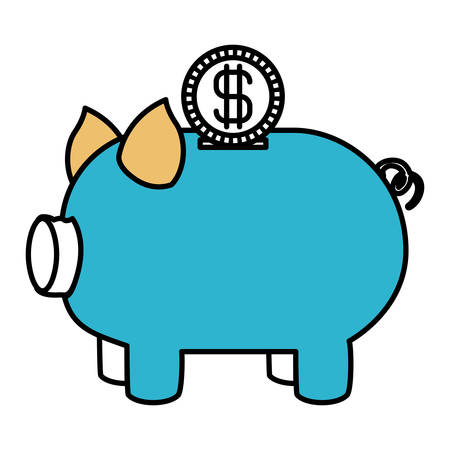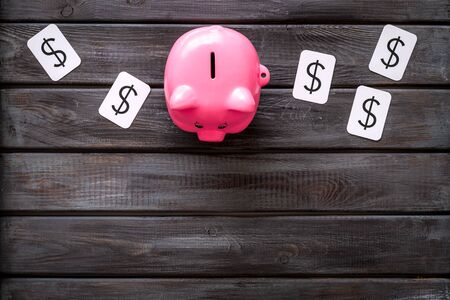1. Understanding Round-Up Apps
If youve ever wished saving money could be as easy as buying your daily coffee, round-up apps might just be your new best friend. These clever apps are designed to help you save money without even thinking about it, and they’re quickly becoming a staple for Americans who want to boost their savings with minimal effort.
What Are Round-Up Apps?
Round-up apps are financial tools that automatically round up your everyday purchases to the nearest dollar and set aside the spare change into a savings or investment account. For example, if you buy a latte for $3.50, the app rounds it up to $4.00 and transfers the extra 50 cents into your savings. It’s an easy, hands-off way to make saving a part of your daily routine.
How Do They Work?
The magic happens when you link your debit or credit card to a round-up app. Every time you make a purchase, the app keeps track of the transaction, calculates the round-up amount, and moves that small difference into your chosen account. Over time, these small amounts can add up to something significant—all without you needing to lift a finger.
How Round-Up Apps Work: A Simple Example
| Purchase Amount | Rounded Up To | Spare Change Saved |
|---|---|---|
| $5.25 (Lunch) | $6.00 | $0.75 |
| $12.10 (Groceries) | $13.00 | $0.90 |
| $2.80 (Coffee) | $3.00 | $0.20 |
Why Are Round-Up Apps So Popular?
A lot of Americans find traditional saving methods tough to stick with, especially with busy lifestyles and rising living costs. Round-up apps remove the stress by automating the process—no need for big sacrifices or complex budgeting strategies. Plus, watching your savings grow from what would otherwise be loose change is both motivating and rewarding.
Main Reasons People Use Round-Up Apps:
- Simplicity: No manual transfers or complicated steps.
- Automatic Savings: Save without even noticing it’s happening.
- No Minimums: Even tiny amounts contribute to your goals.
- Motivation: Small wins add up and keep you on track.
2. Top Round-Up Apps in the U.S.
Round-up apps have become a go-to tool for Americans looking to grow their savings without even thinking about it. These apps work by rounding up your everyday purchases to the nearest dollar and saving or investing the spare change. Let’s explore some of the most popular round-up apps in the U.S., their key features, fees, and how they blend into typical American spending habits.
Most Widely Used Round-Up Apps
| App Name | Main Features | Monthly Fees | Best For |
|---|---|---|---|
| Acorns | Automatic round-ups, investment options, retirement accounts, cashback from select retailers | $3–$5 | Beginner investors, those looking to start with small amounts |
| Chime | Savings account integration, automatic round-ups on debit card purchases, no overdraft fees | $0 | People who want simple, fee-free banking and savings |
| Qapital | Customizable saving rules (not just round-ups), goal-based savings, joint accounts | $3–$12 | Goal-oriented savers, couples or roommates saving together |
| Digit (Now Oportun) | Automated savings based on spending patterns, overdraft prevention, bills management | $5 | Users who want hands-off, smart savings beyond just round-ups |
| Bank of America Keep the Change® | Rounds up debit card purchases and transfers to linked savings account, only available for BoA customers | $0 (with eligible accounts) | Bank of America customers wanting an easy way to save automatically |
How Do Round-Up Apps Fit Into Everyday American Spending?
Round-up apps are designed for people who use debit or credit cards for most purchases—think grabbing coffee at Starbucks, filling up gas at Costco, or shopping at Target. Instead of manually transferring money to savings every month, these apps do it seamlessly with each transaction. This “set it and forget it” approach makes it easier for Americans—especially those who struggle to save regularly—to build a financial cushion over time.
User Experience and Accessibility
Most round-up apps link directly to your bank account or card. Once set up, you barely notice the spare change being tucked away after each purchase. For example, if you spend $3.45 at Dunkin, $0.55 will be rounded up and saved automatically. Over weeks or months, these small amounts add up—often surprising users with how much they’ve managed to save without any extra effort.
A Quick Glance: Typical Use Case Scenarios
- The College Student: Uses Acorns to invest spare change from daily coffee runs and fast food stops.
- The Busy Parent: Relies on Chime or Bank of America Keep the Change® to automatically grow an emergency fund while running family errands.
- The Savvy Saver: Sets multiple goals with Qapital for vacations, gifts, or holiday shopping—all funded by everyday transactions.
- The Tech-Savvy Professional: Uses Digit (Oportun) for smarter saving that adapts based on monthly bills and paychecks.
No matter your lifestyle or budget size, there’s likely a round-up app tailored for your needs—making it easier than ever for Americans to maximize their savings in the background of daily life.

3. How to Integrate Round-Up Apps Into Your Budget
Round-up apps are a simple way to grow your savings without feeling like you’re making big sacrifices. Here’s how you can weave these apps into your monthly budget and get the most out of your spare change, all while sticking to your regular spending habits.
Understanding How Round-Up Apps Work
Round-up apps connect to your debit or credit card and automatically round up each purchase to the nearest dollar, sending the difference to your savings account or investment portfolio. For example, if you buy a coffee for $3.25, the app rounds up to $4.00 and saves $0.75 for you.
Step-by-Step Guide to Budget Integration
Step 1: Choose the Right App
Start by picking an app that matches your financial goals. Some popular options in the U.S. include Acorns, Chime, and Qapital. Compare their features and fees before signing up.
Step 2: Set Realistic Savings Goals
Decide what you want to save for—whether it’s an emergency fund, a vacation, or holiday shopping. Setting a clear goal keeps you motivated.
Step 3: Track Your Progress Alongside Your Monthly Budget
It’s important to know how much money is being rounded up and saved each month. Most apps provide easy-to-read dashboards, but you can also add a row in your personal budget spreadsheet or app to track round-up contributions.
| Month | Total Rounded Up ($) | Total Saved ($) |
|---|---|---|
| January | 18.75 | 18.75 |
| February | 22.30 | 41.05 |
| March | 19.60 | 60.65 |
Step 4: Adjust If Needed Without Changing Your Lifestyle
If you notice that round-ups are adding up too quickly or not enough, most apps allow you to set limits or add multipliers for faster saving. This flexibility means you don’t need to overhaul your spending habits—just tweak the settings as needed.
Troubleshooting Common Challenges
- Cautious Spenders: If you rarely use your cards or make only large purchases, consider enabling “boosts” or one-time transfers within the app to keep savings on track.
- Tight Budgets: Since round-ups come from small change, they usually don’t disrupt your cash flow—but always review transactions at month-end so nothing slips through unnoticed.
- Bigger Goals: Pair round-up savings with automatic transfers or cash-back rewards to accelerate progress toward larger financial targets.
Quick Tips for Maximum Impact
- Link round-up savings directly to a high-yield savings account for better returns.
- Create reminders (monthly or quarterly) to check your progress so you stay engaged with your goals.
- If you get paid biweekly or monthly, coordinate round-up tracking with your pay schedule for easier budgeting.
- Take advantage of referral bonuses offered by some apps—invite friends and grow your savings together!
By following these steps and tips, integrating round-up apps into your budget becomes effortless, helping you steadily build savings without giving up what you love.
4. Security and Privacy Considerations
When using round-up apps to boost your savings, it’s important to understand how these platforms keep your money and personal information safe. With so many financial apps available in the U.S., security should be a top priority before you link your bank account or credit card.
Understanding Common Security Protocols
Most reputable round-up apps use industry-standard security protocols similar to those used by major banks. Here are some key features you’ll often find:
| Security Feature | Description |
|---|---|
| 256-bit Encryption | This technology scrambles your data, making it unreadable to hackers. |
| Two-Factor Authentication (2FA) | Requires a second form of identification, like a code sent to your phone, when logging in. |
| Bank-Level Security | Many apps partner with financial institutions that are FDIC-insured, protecting your deposits up to $250,000. |
| Regular Security Audits | Apps undergo third-party checks to identify vulnerabilities and fix them promptly. |
What to Check Before Connecting Your Accounts
Before linking any bank or credit card account, do a quick check for these signs of a secure app:
- Reputable Providers: Choose apps with positive reviews and coverage from trusted sources like NerdWallet or Forbes.
- Transparent Privacy Policies: The app should explain clearly how your information is stored and used.
- No Sharing Without Consent: Make sure they don’t sell your data to third parties without your approval.
- Easy-to-Reach Support: Look for accessible customer service in case you have concerns or questions about security.
Key Questions to Ask Yourself:
- Does the app use strong encryption?
- Is two-factor authentication available?
- Are there clear privacy policies posted on their website?
- If something goes wrong, is there a support team I can reach easily?
Tips for Keeping Your Financial Data Safe
Your own habits matter just as much as the app’s security features. Here are some tips American users often follow:
- Create Strong Passwords: Use unique combinations of letters, numbers, and symbols.
- Avoid Public Wi-Fi: Don’t access financial apps on public networks unless you’re using a secure VPN.
- Monitor Accounts Regularly: Check your linked accounts for unusual activity or unauthorized transactions.
- Update Apps Frequently: Always install updates to get the latest security patches and improvements.
5. Long-Term Benefits and Potential Drawbacks
Evaluating Round-Up Apps for Your Future Savings Goals
Round-up apps have become popular tools for Americans looking to build their savings with minimal effort. But are they a smart choice for your long-term financial goals? Lets break down the advantages and possible disadvantages so you can make an informed decision.
Pros of Using Round-Up Apps
| Benefit | Description |
|---|---|
| Effortless Saving | Savings grow automatically every time you make a purchase, requiring little to no action from you. |
| Low Barrier to Entry | You don’t need to set aside large amounts at once—just your spare change adds up over time. |
| Encourages Positive Habits | Makes saving money a regular part of your daily routine without feeling overwhelming. |
| Optional Investment Features | Some apps offer the ability to invest your round-ups, potentially increasing your returns over time. |
| Customizable Settings | You can often adjust how much is rounded up or pause contributions when needed. |
Potential Drawbacks to Consider
| Drawback | Description |
|---|---|
| Small Contributions | Because deposits are based on spare change, it may take a long time to reach significant savings. |
| Monthly Fees | Some apps charge subscription fees, which can eat into your savings, especially if you’re not saving much each month. |
| Lack of Personalization | The automated nature may not align with specific or more aggressive savings goals. |
| Potential for Over-Spending | The “set and forget” method might lead some users to pay less attention to their overall spending habits. |
| No Substitute for Larger Investments | While helpful, these apps shouldn’t replace more robust retirement or investment plans like 401(k)s or IRAs. |
How to Decide If a Round-Up App Is Right for You?
- Start with Your Goals: Are you looking for an easy way to save small amounts, or do you need a plan for larger financial milestones?
- Review Fees and Features: Compare several apps to find one that matches your needs without unnecessary costs.
- Consider Your Spending Habits: If you rarely use debit/credit cards or prefer cash, round-up apps may not be as effective for you.
- Use as Part of a Bigger Strategy: Think of round-up apps as one tool in your savings toolbox—not the only solution.
If you want a simple, low-pressure way to start saving or investing without overthinking it, round-up apps could be a good fit. Just remember to keep an eye on fees and consider pairing them with other savings methods for the best results.


